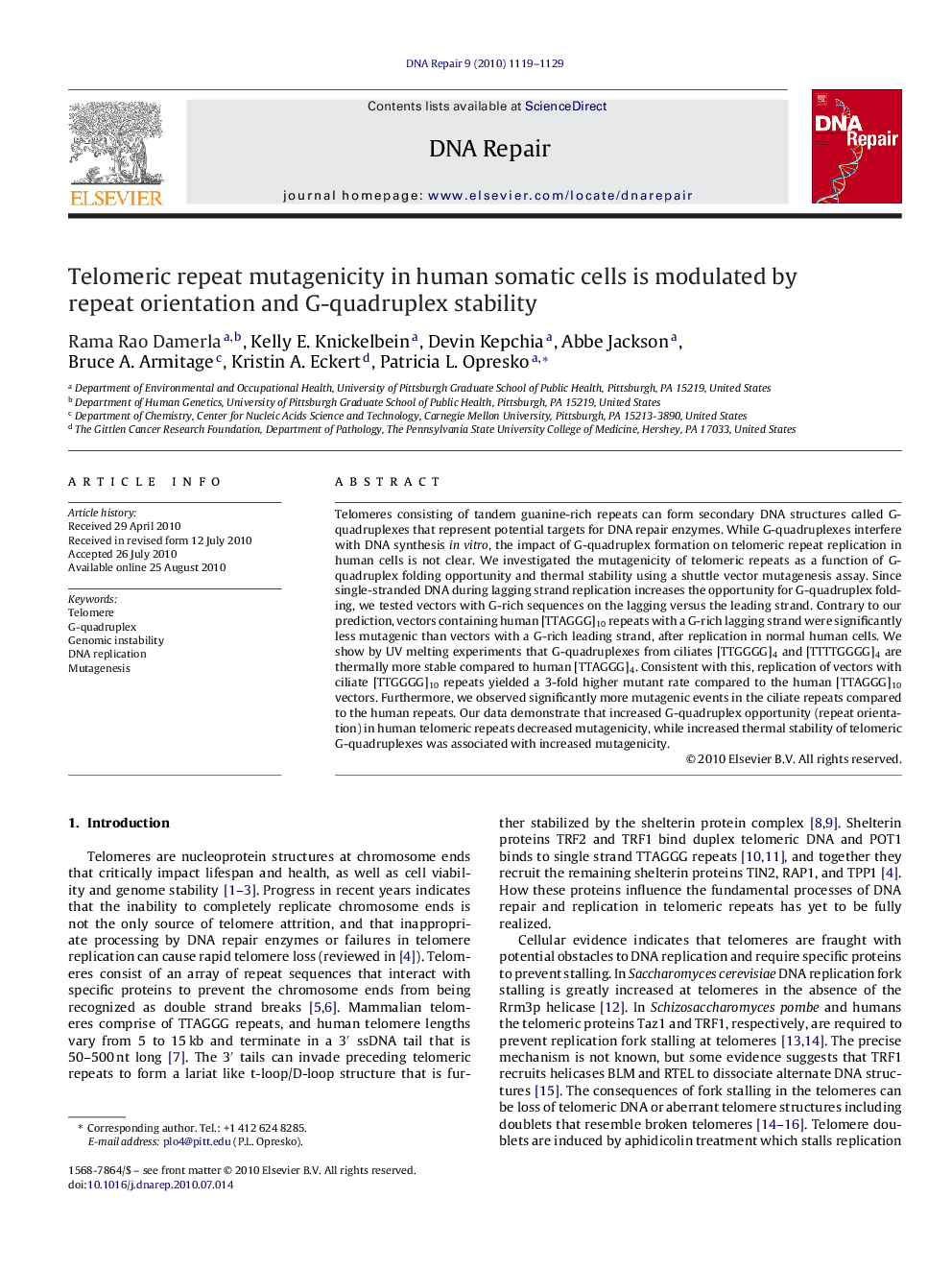| Article ID | Journal | Published Year | Pages | File Type |
|---|---|---|---|---|
| 1980912 | DNA Repair | 2010 | 11 Pages |
Abstract
Telomeres consisting of tandem guanine-rich repeats can form secondary DNA structures called G-quadruplexes that represent potential targets for DNA repair enzymes. While G-quadruplexes interfere with DNA synthesis in vitro, the impact of G-quadruplex formation on telomeric repeat replication in human cells is not clear. We investigated the mutagenicity of telomeric repeats as a function of G-quadruplex folding opportunity and thermal stability using a shuttle vector mutagenesis assay. Since single-stranded DNA during lagging strand replication increases the opportunity for G-quadruplex folding, we tested vectors with G-rich sequences on the lagging versus the leading strand. Contrary to our prediction, vectors containing human [TTAGGG]10 repeats with a G-rich lagging strand were significantly less mutagenic than vectors with a G-rich leading strand, after replication in normal human cells. We show by UV melting experiments that G-quadruplexes from ciliates [TTGGGG]4 and [TTTTGGGG]4 are thermally more stable compared to human [TTAGGG]4. Consistent with this, replication of vectors with ciliate [TTGGGG]10 repeats yielded a 3-fold higher mutant rate compared to the human [TTAGGG]10 vectors. Furthermore, we observed significantly more mutagenic events in the ciliate repeats compared to the human repeats. Our data demonstrate that increased G-quadruplex opportunity (repeat orientation) in human telomeric repeats decreased mutagenicity, while increased thermal stability of telomeric G-quadruplexes was associated with increased mutagenicity.
Related Topics
Life Sciences
Biochemistry, Genetics and Molecular Biology
Biochemistry
Authors
Rama Rao Damerla, Kelly E. Knickelbein, Devin Kepchia, Abbe Jackson, Bruce A. Armitage, Kristin A. Eckert, Patricia L. Opresko,
